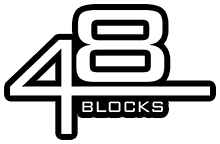Aaron Meza has made, or been a part of the making, some of the all-time best skate videos. He’d probably say that he was in the right place at the right time. But if you watch FTC’s Penal Code 100A, it’s easy to see that there’s a lot more going on there than luck. His camera and editing techniques, as well as musical choices, continue to be recognizable through all of the projects that he’s worked on. Whether it’s the FTC videos, or his work with Crailtap, Meza has blessed skateboarding with more than his fair share of magical moments. The following interview breaks down how it all happened.
48 Blocks: You’re originally from the Bay Area. Can you talk a little bit about when and how you first got into skateboarding and filming skateboarding?
Aaron: Some friends got boards so I got a generic board from Price Club for Christmas. This was 7th grade. Years later, a friend of mine got a video camera. So we’d film here and there. There wasn’t really filmers that you knew about then. So there was no real model to be like, “I want be a filmer.” The only person that you really knew that was making skate videos was Stacy Peralta. And that seemed totally out of reach. Not until seeing guys like Jake Rosenberg did I think that it was just other skaters—usually ones that weren’t very good, perfect for me—that could film for a video.
 48 Blocks: I think most people have credited James Kelch with discovering you, and being one of the first to film with you. How did you first meet James and start hanging out with him, Jake Vogel, and the rest of the Embarcadero crew?
48 Blocks: I think most people have credited James Kelch with discovering you, and being one of the first to film with you. How did you first meet James and start hanging out with him, Jake Vogel, and the rest of the Embarcadero crew?
Aaron: I was filming one of my friends trying to switch 180 the Seven. James came up and asked if I could film some stuff. I think I just turned around and started filming James, leaving my friend hanging. Gonz already did it anyway.
I knew who James was from seeing him at Embarcadero all those years. And he’d always say what’s up. But after that day, we started to film a few days a week. He was trying to get on Plan B, which was just starting. From there, pretty much everyone from Embarcadero started asking me to film. I was hyped for a lot of reasons. I loved skate videos. So the idea that I could film someone who was good enough to be in them was really rad. And I was really stoked to be hanging out, and becoming friends with what I thought were some of best skaters in the world. Even though some of them weren’t even pro yet or even fully sponsored, a lot of the dudes at Embarcadero were me and my friends’ favorite skaters. And as far as hanging around James, it’s what I imagine Richie Cunningham felt like hanging around Arthur Fonzarelli.
48 Blocks: What was the vibe like for you when you first started going to Embarcadero?
Aaron: I first went to Embarcadero on the day the Bones Brigade were rumored to be filming there for Animal Chin. There were hundreds of kids. I’d never seen so many skaters in one place. There were probably some locals at that time. But I was too young to realize it. My friends and I were too busy trying to ride off the high stage.
From about 1986 to about 1991, I’d just randomly go there. Not like every weekend, but maybe once or twice a month, or sometimes not even go there for a few months. During that time, it’s popularity as a spot would come and go. I remember one time after not being there for a while, we were driving by and stopped just to check it out. We parked behind the wave, and just popped our heads over to look at it. It was only James, and one other dude there skating. And this was on a weekend.
By the time I started filming James, I already knew some of the younger guys like Chico, York, Karl, and Umar. So I never got it too bad. But I was aware of the heavy localism through the years. I just kept to myself, and didn’t act like an idiot.
48 Blocks: When and how were you approached to make FTC’s Finally?
Aaron: Pretty quickly after starting to film James, I was in FTC when it was still on Bush St. Kent comes up to me and goes, “Are you Aaron? James told me about you. I want you to film our video.” I was like cool. He then pulled out a Xerox copy of an ad he had just sent to Thrasher that said, “Video Out Now!” I was pretty tripped out. It took a couple of years for it to come out. The first day I went out with Jovontae within the first five minutes he goes, “We’re really going to be filming for my World part.” And a lot of the other guys were on that same page. I ended up filming them for their board sponsor videos. That was the biggest hold up for that first FTC video.
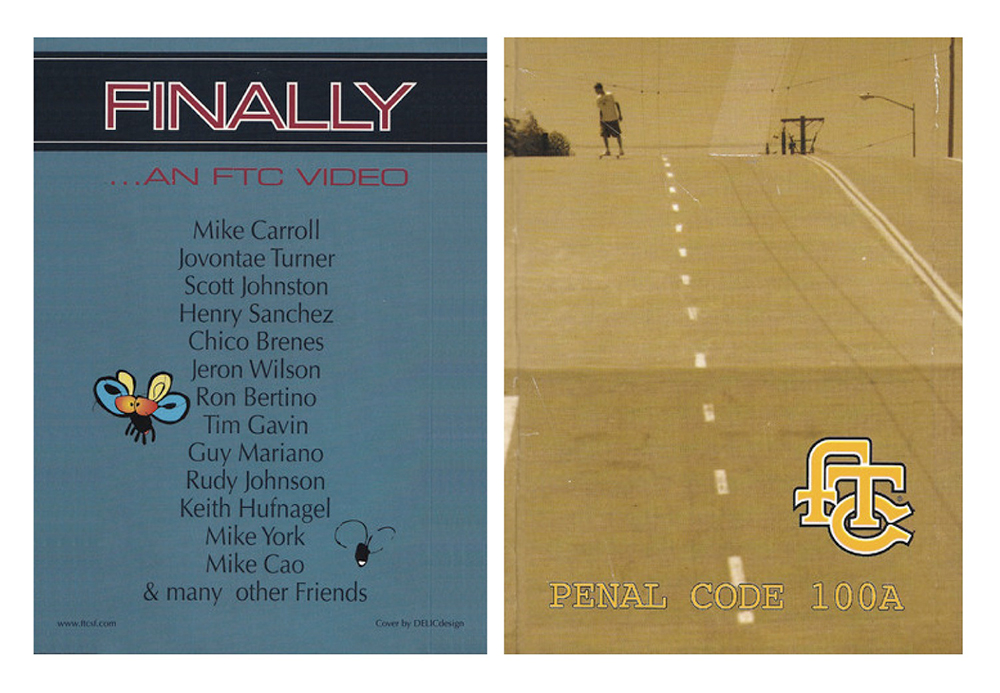
48 Blocks: At the time Embarcadero was already considered the Mecca of skateboarding, but Finally sort of gave a behind the scenes look into the SF scene. It was the first time that you saw many of the locals and really had a crew vibe. Was all of that a conscious effort or did it just happen naturally during the editing process.
Aaron: I think it was a more encompassing thing just out of necessity. To make the video longer we were just going to have to let more people in and not rely on just the main guys who were on the “team.” By that time it was open to interpretation as to who was officially on FTC or not. I will say that everyone in the video at least owed the shop some product at one time or another. Triple that amount for Jovontae.
48 Blocks: Talk a little bit about Mike Carroll. You started filming him back in those early days, and you guys have remained friends and continue to work together. How did you first meet? Did you instantly click, or was it something that sort of built up over time?
Aaron: I’m still waiting to click with Carroll. I think we got along pretty much from the start, but weren’t best buds right away. We got closer as time went on. I really don’t know why, but for some reason he’s become someone that I can say anything too. Not like in a heartfelt way, but in a “Mike you look like shit, today” kind of way. We don’t seem to offend each other. For better or for worse, kind of like a brotherly thing. We bicker a lot too.
48 Blocks: Finally was followed up a few years later with Penal Code, that video was an instant classic. Everything from the Super 8 portraits at the start to the timeless soundtrack and skating was pretty much spot on. Did you have a formula in mind when you were working on that video or did it just happen organically?
 Aaron: I had the idea to do a Super 8 intro with that song for a while. Some songs were picked before we started editing, like Bobby’s (Puleo), and the montage songs. Max (Shaff) and Scott’s (Johnston) songs were picked pretty last minute while editing. I think I just had a feel for these old songs that would work well with skating. I knew I’d be making this video soon. So I would just catalog songs in my head. I do think the best song on there is Huf’s song, and he picked it.
Aaron: I had the idea to do a Super 8 intro with that song for a while. Some songs were picked before we started editing, like Bobby’s (Puleo), and the montage songs. Max (Shaff) and Scott’s (Johnston) songs were picked pretty last minute while editing. I think I just had a feel for these old songs that would work well with skating. I knew I’d be making this video soon. So I would just catalog songs in my head. I do think the best song on there is Huf’s song, and he picked it.
48 Blocks: During those FTC video years, there was the Ternasky / Rosenberg-era Plan B videos, and the Tim Dowling-era Girl and Chocolate videos. How involved were you in filming for those? I’m imaging that you filmed a lot of Goldfish, Paco, and Mouse.
Aaron: I would film with all the Girl and Chocolate guys who lived in SF. And I’d take trips to LA and film too. For Mouse, I went to Vancouver for about two weeks. It was the first time we had the VX 1000, and the first day filming we went to the Pots Rail, and Eric did all those tricks, nollie nosegrind, nollie frontside noseslide, and nollie noseblunt, all in about a half hour or so. He frontside grinded a big rail right before that. I got college credit for Mouse.
48 Blocks: Sometime around 2000 or so, you took the job as editor of Skateboarder mag. That’s sort of a change in roles from video to print. How did that transition go down?
Aaron: I had always wanted to work for a magazine from hanging around Lance Dawes and Jake Phelps. It just seemed like a fun thing to do. At one point, Dawes was kind of grooming me to work for Slap. Later, I moved to LA, and Ballard lived down the street from me. He was the photo editor of Skateboarder. He’d show me stuff he was working on, and ask my opinion about articles. Then the editor at the time quit, and he asked me to come work for them We just finished The Chocolate Tour, and I felt like this would be something cool to try out. It was a lot of fun.
48 Blocks: How many years were you at Skateboarder, and what ultimately caused you to leave?
Aaron: I was there for about five years. Towards the end, things just kind of fell apart staff-wise, and I just felt exhausted.
48 Blocks: After that, you went to Girl and took over the Randoms at Crailtap, and also worked on their video projects. Did that happen pretty much immediately after Skateboarder?
Aaron: While I was still at Skateboarder, Bob K sent out an email saying he was quitting Girl, and was going to stop doing Crailtap. Since the Randoms were a daily thing, I wrote an email to Megan Baltimore saying, “Hey if you need help with the site, I can help out until you find someone else.” A little bit before that, they had contacted me about working on some other projects too. She wrote me back asking if I’d want to come to Girl full-time. It just went from there.
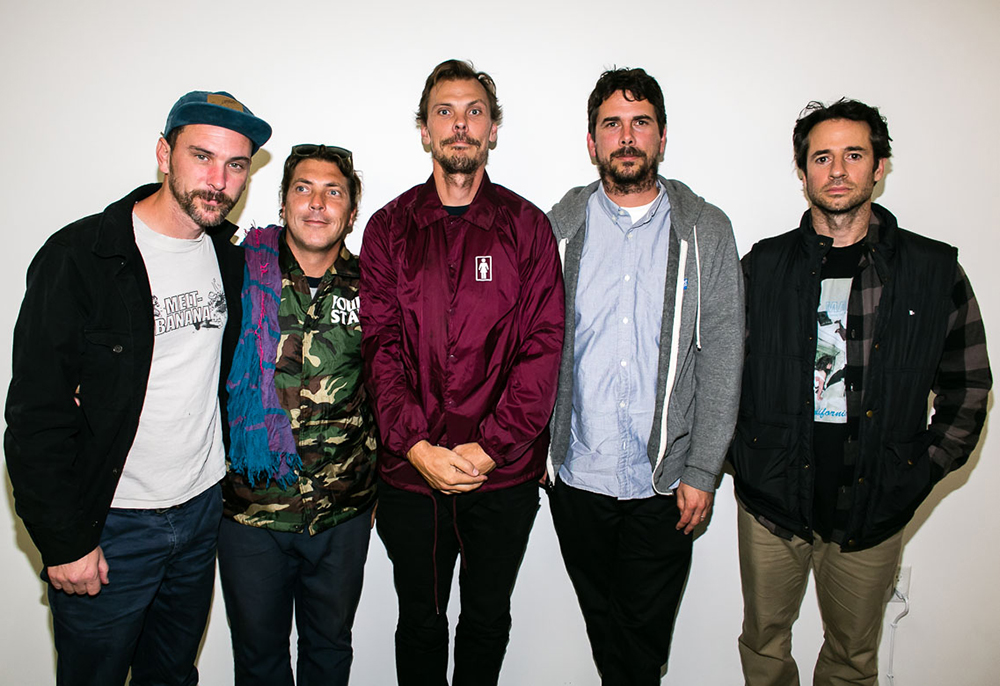
48 Blocks: What is your official role at Girl, and what do you do on a day-to-day basis?
Aaron: My official title is Visual Media Marketing Manager. I do web stuff, help with ads, ad schedules, film, etc. Lately I’ve been mostly working on video stuff. I’ve been editing a lot.
48 Blocks: How often are you filming these days, and how does what you do balance with what Ty Evans does?
Aaron: Ty basically works on the traditional company videos. Since Fully Flared, I’ve just been filming on trips, and making videos out of those, like Beauty and the Beast and the Fourstar videos. We hired Roger Bagley recently. He’s been helping both Ty and I.
48 Blocks: What’s it like working with Spike Jonze?
Aaron: One thing I’ve noticed is that he gets really into whatever he’s working on, whether it’s a big commercial or just a little video for the internet. He seems as equally enthusiastic about both. I like that about him. He’s just into whatever he’s doing. And as far as know how goes, I don’t think he even lets that get in his way. Like even if he doesn’t understand something technically, he’ll just try it anyway. Like his own limitations on what he can do is not going to stop him from trying something. He’s pretty fearless.
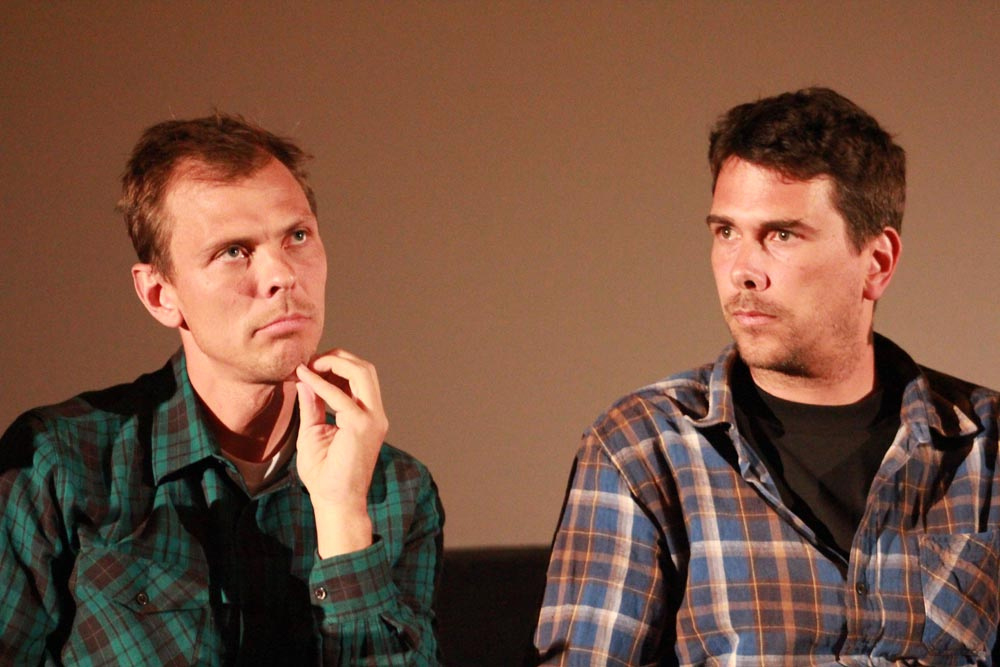
48 Blocks: Girl films has always kept it pretty innovative with filming techniques. How do you guys stay on the forefront of skateboard filmmaking?
Aaron: A lot of that stuff comes from Ty. When it comes to skits and things, I usually contribute more to the story idea than the technical stuff.
48 Blocks: What’s your personal take on VX1000 verse HD?
Aaron: I think there’s room for both for sure. I’m no HD snob. Although, I prefer working with an HD camera just because of the kind of videos I’ve been making seem better suited for it. But they’re both just cameras. HD video doesn’t always have to be time lapse, and slo mo and dolly shots. It can be whatever you want it to be. I’ve always been more into what’s being filmed rather than what it’s been filmed on.
48 Blocks: I think that anyone that’s ever tried to film skateboarding knows that some people are easier to film than others. Out of the Girl / Chocolate camp, who would you say is relatively easy to film?
Aaron: Malto is the easiest hands down. I haven’t filmed with Cory Kennedy yet though. When Guy has something in mind, he usually gets it. He’s pretty determined now, which is funny because in the old days he was pretty down to screen my calls.
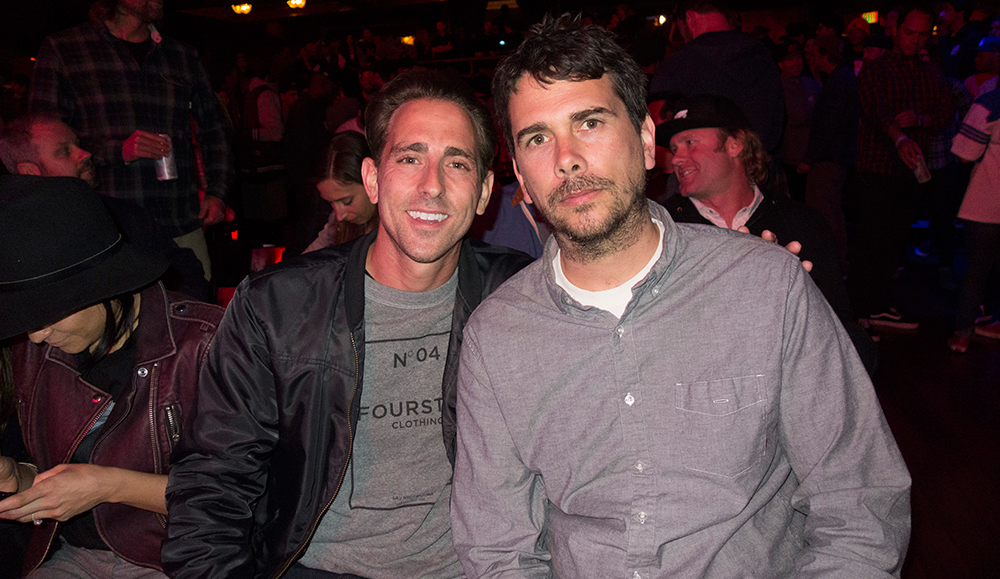
48 Blocks: Out of all of the videos that you’ve worked on, do you have a favorite?
Aaron: Everyone seems to like Penal Code. But at the time, I was just dying to get it done. I didn’t really realize how much people liked it until years later. Out of the more recent videos I like Badass Meets Dumbass for some reason. It’s just a tour video. But it was really fun to make, and I liked the way it came out. I spy filmed Carroll drinking a root beer float at an A&W in Canada once. He was concentrating pretty hard on his soda to ice cream ratio on each bite. That one’s a fav too.
48 Blocks: Do you have any advice or techniques that you can share with people out there that are filming and making videos that helped you improve your craft?
Aaron: Honestly, I was in the right place at the right time. I lived in an area with a high concentration of good skaters. And I was the only one around with a camera for the most part. If I grew up in Tulsa, Oklahoma, I wouldn’t be doing what I do today. Pretty bleak, huh?
